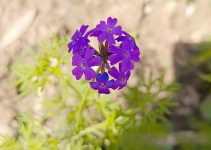Ranunculus asiaticus: Persian Buttercups/ रननक्यूलस
Persian Buttercups/ रननक्यूलस
Hindi Name: पर्शियन बटरकप या रननक्यूलस (Ranunculus)
About Persian Buttercups
Persian Buttercups are stunning flowering plants known for their rose-like, multi-layered blooms in vibrant shades of red, pink, yellow, orange, and white. Native to the eastern Mediterranean region, they are a favorite for winter and spring gardens due to their long-lasting flowers and lush texture.
Best Growing Conditions
- Climate: They thrive in cool to mild climates. Ideal growing months in India are October to February.
- Sunlight: Choose a spot with full to partial sunlight — at least 5–6 hours of direct light daily.
- Soil: Use well-draining, fertile soil rich in organic matter. A mix of garden soil + compost + sand (2:1:1) works best.
- pH: Slightly acidic to neutral soil (6.0–7.0).
Planting Tips
- Tubers: Persian buttercups grow from small, claw-like tubers (similar to bulbs).
- Soaking: Before planting, soak tubers in lukewarm water for 3–4 hours to help them sprout faster.
- Depth: Plant the tubers about 2 inches deep, claws facing downward.
- Spacing: Keep 6–8 inches between each plant for proper air circulation.
Watering
- Water lightly after planting and keep the soil evenly moist (not soggy).
- Overwatering can cause root rot, so ensure good drainage.
- Reduce watering once the plant starts to yellow after blooming season.
Care and Maintenance
- Fertilizing: Apply a balanced liquid fertilizer (10-10-10) every 2–3 weeks during the growing season.
- Deadheading: Regularly remove faded blooms to encourage more flowers.
- Mulching: Add a layer of organic mulch to retain moisture and regulate soil temperature.
- Pests: Watch for aphids and powdery mildew—use neem oil spray if needed.
Blooming and Aftercare
- Persian Buttercups bloom 8–12 weeks after planting, usually from January to March in India.
- After flowering, allow the foliage to die back naturally.
- You can dig up and store tubers in a dry, cool place for replanting next season.
Pro Tips
- Ideal for pots, borders, and cut flower gardens.
- For continuous blooms, stagger planting every 2–3 weeks during winter.
- Combine with pansies, petunias, or dianthus for a colorful winter display.



